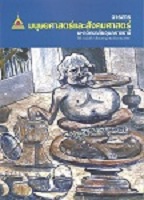ความเป็นไทของชาวอาหม: เรื่องเล่าจากอินเดียอีสาน
Main Article Content
บทคัดย่อ
ชาวอาหมถือว่าตนเองเป็นคน “ไท” กลุ่มหนึ่งที่มีรากฐานทางวัฒนธรรม “ไท” ไม่แตกต่างจากคนไทกลุ่มอื่น ปจั จุบันชาวอาหมถูกกลืนวัฒนธรรมหลายด้านกับวัฒนธรรมอินเดียบทความนี้จึงมีเจตจำนงเพื่อบอกเล่าเรื่องราวทางวัฒนธรรมในฐานะภาพสะท้อนความเป็นชาวอาหมที่ยังคงหลงเหลืออยู่นับตัง้ แต่เรื่องราวทางประวัติศาสตร์ที่บอกเล่าถึงเจ้าหลวงเสือก่าฟ้าในฐานะวีรบุรุษของชาวอาหมช่วงพุทธศตวรรษที่ 17 ความเป็นไททางด้านภาษาซึ่งแม้ชาวอาหมในปจั จุบันจะไม่สามารถสื่อสารด้วยภาษาตระกูลไทได้แต่ยังคงพบรากศัพท์ภาษาไทจากการใช้สรรพนามและการเรียกอาหารและข้าวของเครื่องใช้ต่างๆ ความเป็นไทด้านอาหารที่นิยมบริโภคข้าวเหนียว หมู และลุกลาว ความเป็นไทด้านการทอผ้าไหมมุกา ความเป็นไทด้านความเชื่อรวมถึงประเพณีและพิธีกรรมต่างๆ ประกอบด้วยความเชื่อเกี่ยวกับหมอโหลง การเรียกขวัญ แม่ด้ำแม่ผี พระตราอลอง และประเพณีบิฮู ความเป็นไทที่มาจากการบอกเล่าเรื่องราวผ่านด้านสถาปัตยกรรมพระราชวังของเจ้าหลวงอาหม และการบอกเล่าเรื่องราวของจุ้มแสง ซึ่งเป็นเทพารักษ์และตราแผ่นดินของชาวอาหม
ความเป็นไทของชาวอาหมที่เกิดขึ้น อาจช่วยทำให้เราเข้าใจได้ว่า “ความเป็นไทคืออะไร” โดยเฉพาะคนไทยในประเทศไทยที่ยังคงหลงไหลอยู่ในวังวนของโลกาภิวัตน์
Tainess of Ahom People: A Story from North-East India
The Ahoms ethnic group regard themselves as a group of “Tai” people with “Tai” cultural roots. Nowadays, many facets of Ahoms culture have been assimilated into Indian culture. This article aims to recount their cultural story as a reflection of the Ahoms identity that still remains. It begins with a historical account of Chaolung Siukapha, regarded by the Ahoms as a hero in the 17th century. The article then deals with the topic of linguistic Tainess. Even though the Ahoms at present cannot communicate with other languages of the Tai language family, Tai root words are still found in the use of pronouns and terms used to describe food and utensils. Tainess can be perceived in food – the way glutinous rice, pork, and luklao are widely consumed – and Mukta silk weaving. Furthermore, it is evident in beliefs as well as traditions and rituals, namely the beliefs in Mo Lung, Rik Khwan, Me Dam Me Phi, Phra Tra Along, and Bihu. Other aspects that display Tainess are through the architecture of Chaolung’s royal palace and narration by Sum Cheng, the guardian deva and Great Seal of the Ahoms. The Tainess of the Ahoms that exists helps the understanding of the meaning of Tainess, especially for people in Thailand in a time of developing globalization.
Article Details
บทความที่ได้รับการตีพิมพ์เป็นลิขสิทธิ์ของวารสารมนุษยศาสตร์และสังคมศาสตร์ มหาวิทยาลัยอุบลราชธานี
ข้อความที่ปรากฏในบทความแต่ละเรื่องในวารสารวิชาการเล่มนี้เป็นความคิดเห็นส่วนตัวของผู้เขียนแต่ละท่านไม่เกี่ยวข้องกับมหาวิทยาลัยอุบลราชธานี และคณาจารย์ท่านอื่นๆในมหาวิทยาลัยฯ แต่อย่างใด ความรับผิดชอบองค์ประกอบทั้งหมดของบทความแต่ละเรื่องเป็นของผู้เขียนแต่ละท่าน หากมีความผิดพลาดใดๆ ผู้เขียนแต่ละท่านจะรับผิดชอบบทความของตนเองแต่ผู้เดียว

